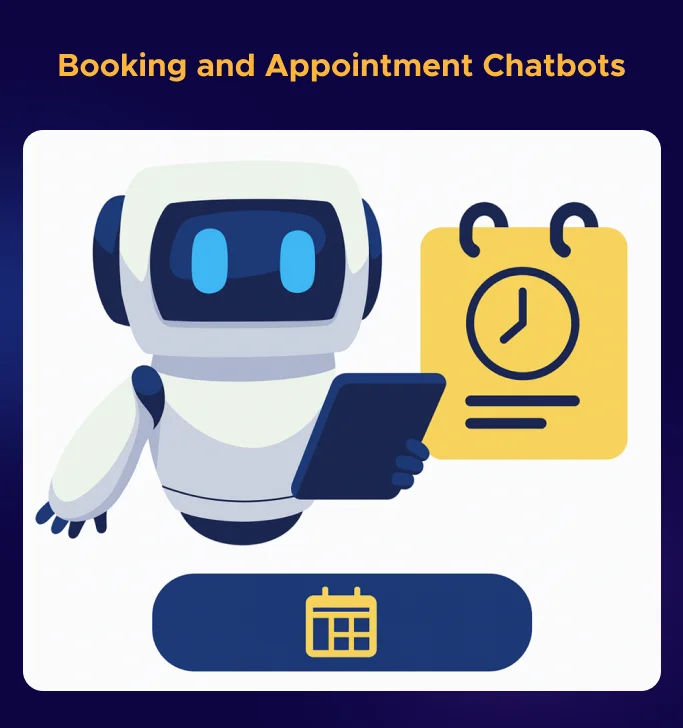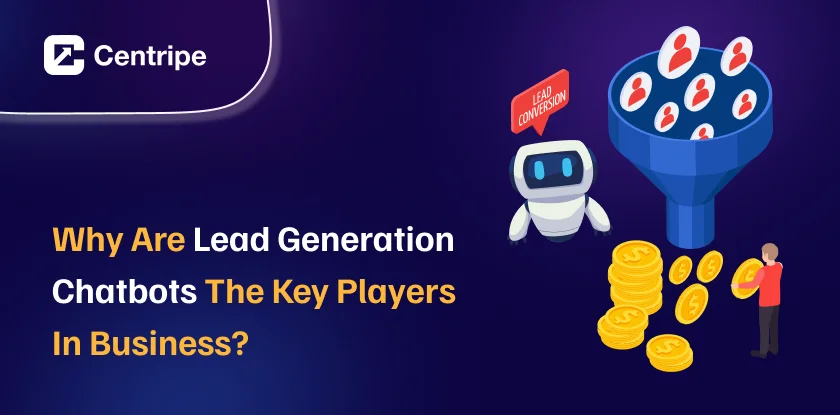The expectations of customers are too high, and for brands to deliver up to that mark, it requires a lot of work. It’s not about just providing products anymore; it’s about providing a great experience.
In eCommerce and SaaS, a sales chatbot can boost conversion rates to 70%. It does this by engaging and guiding customers through the sales funnel.
Lead generation chatbots have become a necessary part of digital business.
Chatbots offer quick, steady answers without breaks, unlike human reps. This can greatly boost conversion rates and customer satisfaction.
What are Lead Generation Chatbots?
They are saviors! A tool that you can customize as per your requirements. It is based on AI to engage with website visitors. Their primary goal is to identify and convert them into leads.
They are a digital sales representative, but with much more capability than human agents. They’re designed with clear conversation flows, business knowledge, and lead qualification criteria. So they engage with prospects in a progressive way.
These tools can work on different channels. This includes websites, social media, messaging apps, and email campaigns.
Note: Chatbots will save businesses and consumers a total of 2.5 billion hours in 2025. They will do this by automating routine inquiries and qualifying leads.
How Do They Work?

Step 1: The Greeting
As soon as someone visits a website, the chatbot pops up with ‘Hello, how can I help you?’
So, it’s like when someone enters a brick-and-mortar store and is greeted by an employee.
Step 2: Understanding What People Say
You don’t show ‘shoes’ to a customer looking for ‘shirts’. The first thing is to show them shirts, and then the pants.
There were many instances when at first customers used to complain about chatbots not answering properly, not giving them the required suggestions.
But with the latest tech, they are now smart enough to understand what people type, even if they use different words.
Step 3: Having a Conversation
There is a script that chatbots work on. But what if the customers are asking something different? Well then, it has sentiment and behavioural analysis. This helps them to talk on point.
Step 4: Collecting Information
How many customers can human agents remember? They will need to look at the information in the system.
But with chatbots for marketing, it is an easy task. They keep track of leads during the chat. Remembering the person’s name, email, and interests.
Step 5: Deciding Who’s Important
The ai powered chatbot can spot visitors who may turn into customers by analysing their answers. Someone ready to buy today gets more attention than someone just browsing.
How to Use Chatbots for Lead Generation?
When a new customer visits your website, the chatbot will start a conversation right away. Check their social media. See what they searched before. Then, give them a personalised experience.
Content strategy plays a crucial role in chatbot effectiveness. Creating scripts that sound natural and provide value is key, and chatbots for lead generation make this process even more effective by gathering essential information for qualification.
The key is balancing helpfulness with a focus on achieving conversion goals.
- Design various conversation pathways for different user types.
- Tailor them to specific industries and product interests.
- Ensure flexibility to meet diverse needs and preferences.
- Use these pathways to enhance user engagement and satisfaction.
- Adapt conversations based on user feedback and behavior.
- Keep the tone friendly and informative throughout.
- Monitor success and refine pathways over time.
Timing and placement are equally important. Place chatbots at key moments in the customer journey.
Trigger them when a user:
- spends time on the pricing page,
- downloads a resource, or
- views several product pages.
It does proactive engagement to boost conversion rates.
Testing and optimization should be ongoing processes. Track conversation analytics to see where prospects lose interest.
Find out which questions get the best answers. Also, discover which conversation flows result in the highest conversion rates.
Test different greeting messages, qualification questions, and call-to-action methods. This will help you improve performance over time.
Types of Lead Generation Chatbots
FAQ Chatbots
It represents the most basic yet effective type of lead generation chatbot.
These tools help answer common customer questions. They also guide conversations to capture leads.
They’re really helpful for businesses that receive frequent questions about pricing, features, or services.
These chatbots can spot buying signals while answering questions. They also smoothly move prospects into lead qualification sequences.
Booking and Appointment Chatbots

It streamlines scheduling. Prospects can book consultations, demos, or service appointments directly through chat.
These chatbots work with calendar systems. They check availability in real-time and gather needed info before the appointment.
They are very useful for service-based businesses, healthcare providers, and B2B companies that depend on consultative sales.
Product Recommendation Chatbots
They use advanced algorithms to recommend products or services based on what users like, need, and do.
These chatbots ask questions about your needs, budget, and use cases. Then, they give you tailored recommendations.
They can boost conversion rates by acting as virtual sales consultants. This way, they also capture detailed information about prospects.
Survey and Feedback Chatbots
It engages users with interactive questionnaires. These questionnaires gather market research and spot sales opportunities at the same time.
These chatbots can check customer satisfaction. They also spot pain points and find prospects who may need extra products or services.
The conversational format typically generates higher response rates than traditional surveys.
Lead Scoring and Qualification Chatbots
They focus specifically on evaluating prospect quality through strategic questioning sequences.
These advanced chatbots use smart algorithms. They score responses and send high-quality leads to sales teams. Also, they nurture lower-scored prospects through marketing automation sequences.
Conclusion
Chatbots have evolved immensely. They are playing a crucial role in small businesses and large enterprises. I get it, the initial investment is high, but what about long-term results?
There are scenarios where you will need human interaction with customers. And so, it comes to this that the hybrid module is the best one for any business. When a chatbot can’t answer the complicated questions, it can connect the customers to agents.
International opportunities have become visible due to such a tech-oriented lead generation chatbot. Customers want to feel important and welcome.
With customization and personalization, chatbots ace that game.
